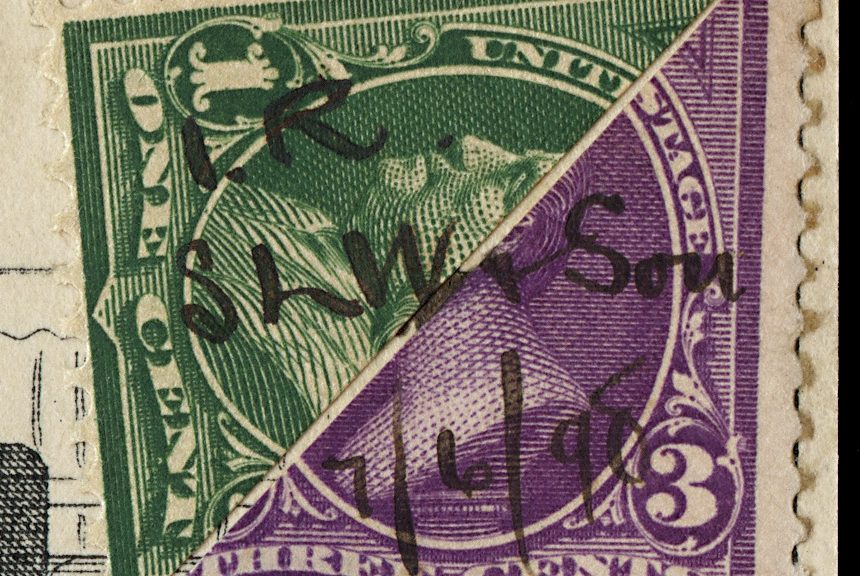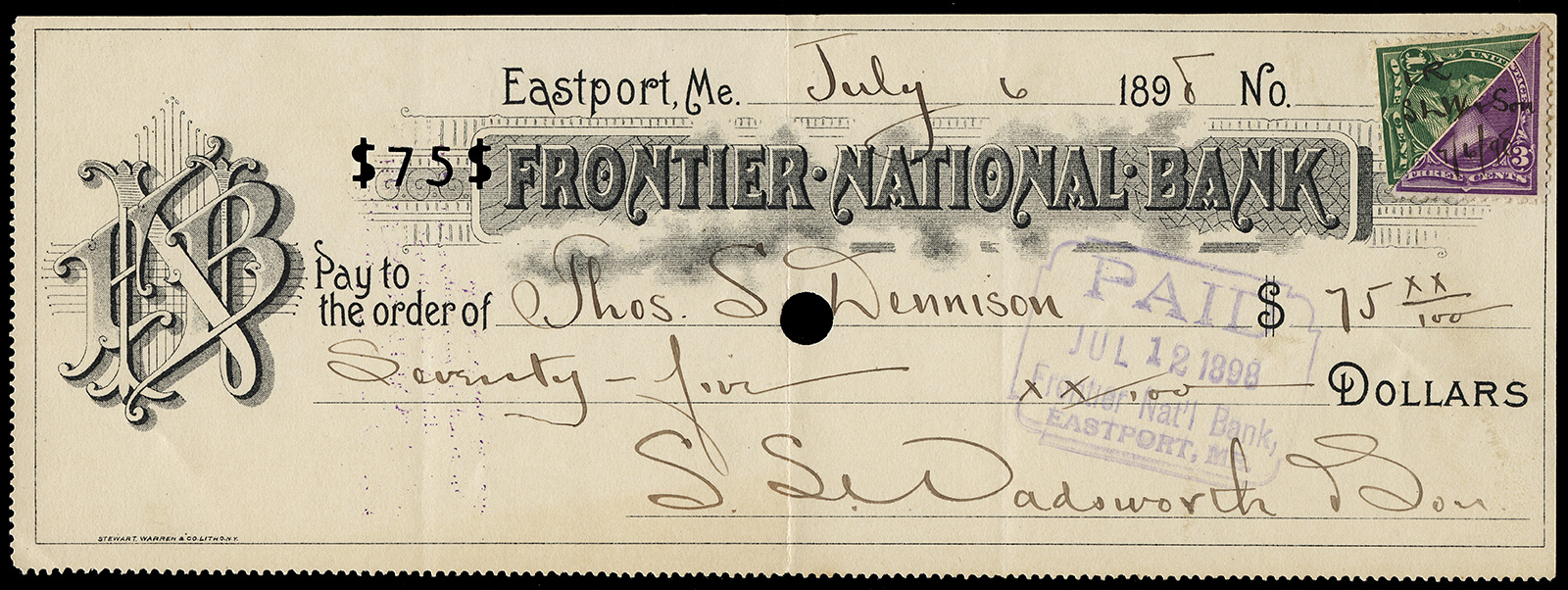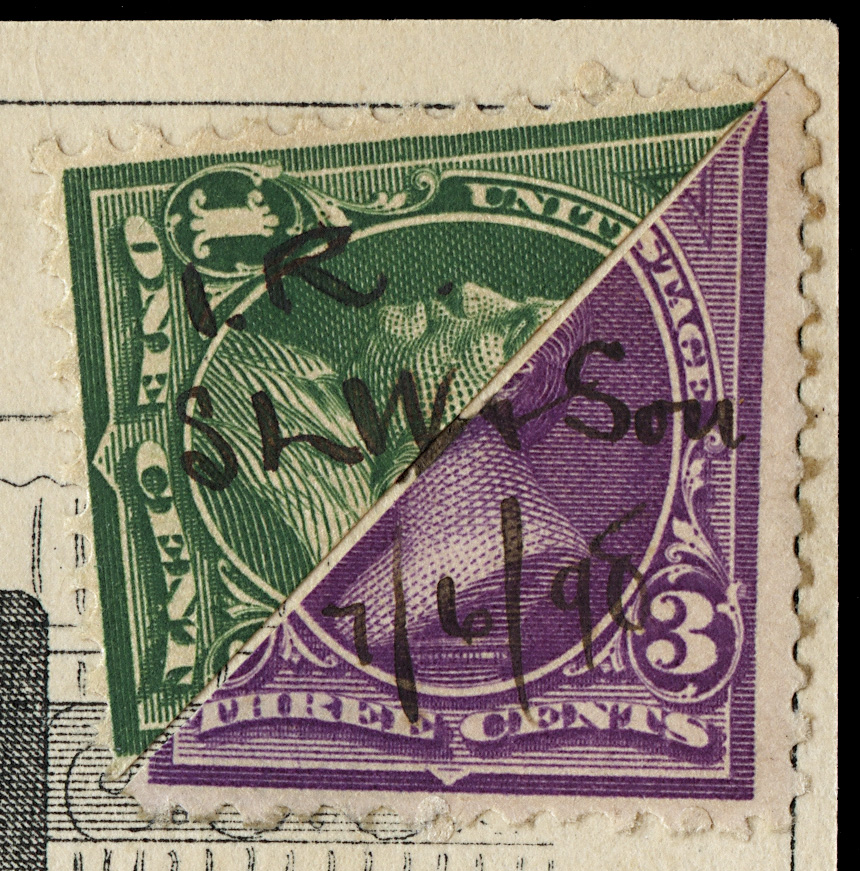
I Don’t Care If It’s Philatelic… It’s Flat Out Gorgeous!
Whilst perusing the Bay of E last week, I stumbled across this item with 7 minutes left in the auction. Talk about providence smiling upon me!
This ticks so many boxes… illegal/improper usage… bisects… great aesthetics.
It reminds me of philatelic covers from the early 20th century where enterprising stamp collectors would bisect 2 separate stamps and position the bisects aesthetically.
However, this is the first revenue-related item I’ve seen where this was the practice. I’ve never seen a comparable piece.
It’s a check on the Frontier National Bank in Eastport, Maine, dated July 6, 1898, with bisected 3-cent (Scott #268) and 1-cent (Scott #279) bureau issues improperly paying the 2 cent tax (1.5 cents + 0.5 cents = 2 cents). Across the pair of bisects is a manuscript cancel reading “I.R. SLW & Son 7/6/98”.
S. L. Wadsworth & Son was ship chandlery established in Eastport in 1818 and still exists as a hardware store today: http://www.slwadsworth.com/
While the assumption is that this piece is philatelic rather than commercial, allow me to put forth the arguments as to why it MIGHT be a legitimate improper usage (that might sound like a bit of an oxymoron, but what I mean is an illegal usage done out of expediency or to defraud the government rather than a collector’s creation).
- The date July 6, 1898 is very early in the taxation period, which is when the majority of legit illegal/improper usages are found, before ample supply of revenue stamps were delivered to more remote areas.
- Eastport Maine is a very remote location. Per Wikipedia:
Eastport is a small city (consisting entirely of islands) in Washington County, Maine, United States. The population was 1,331 at the 2010 census, making Eastport the least-populous city in Maine. The principal island is Moose Island, which is connected to the mainland by causeway. Eastport is the easternmost city in the United States.
So it’s not beyond the realm of possibilities that revenue stamps had not yet made it to Eastport at the time this check was written, and if they didn’t have any 2 cent stamps on hand, this would have been a way to affix 2 cents, albeit illegally.
We’ll never know for certain if this was philatelic or commercial, but candidly I don’t know that it makes a difference in this case. It’s one of a kind IMO… I love it!
The general consensus from those who looked at it, including Richard Friedberg, is that it is 100% genuine.

